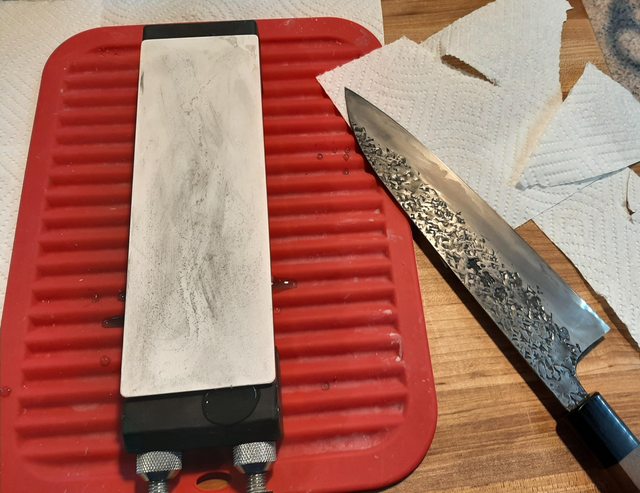Here is a thought experiment, and pictures. First, as perhaps an
oversimplification, imagine your control of the knife is on just two
axis: your wrist (rotation angle along the axis of your knife handle),
and your wrist height. Of course, the human body is more complicated,
but let's focus on these because they are the primary ones involved.
Here is my model of a knife. Note the bevel angle is constant.
At any point along the curve of the "blade", the position of the
knife and handle isn't in question (assuming you want a constant
bevel angle).
View attachment 191934
Here is the position when grinding along (what would normally be) the
flatter part of the knife. Note the wrist angle and height.
View attachment 191935
Here is the position when grinding as you start getting into the curve
approaching the tip. Note the wrist angle and height. The angle is
decreased, and the height is increased. Again, by angle I mean
rotation angle along the axis of your knife handle, err paint stick;-)
The edge angle is constant (as determined by my junky plastic plate).
View attachment 191936
Still not sure? Let's push it to a (probably unrealistic) position
where the blade bends a full 90 degrees. The angle is now zero.
View attachment 191937
I conclude that under the assumption that we maintain a constant bevel
angle, and have two means of control (rotation angle along the axis
of your knife handle, and handle height), you must raise the handle
and rotate to a lower angle.








